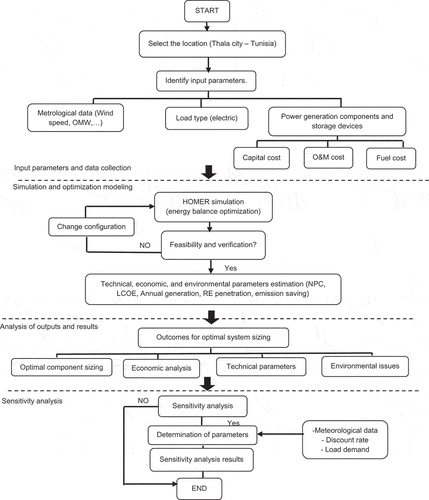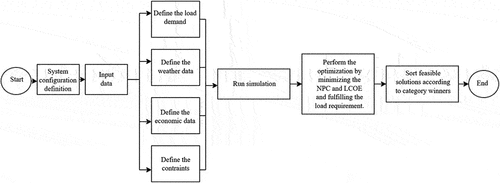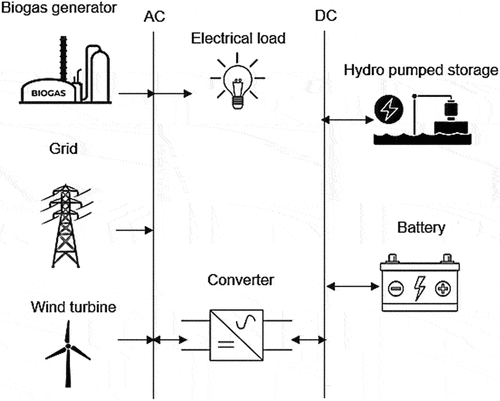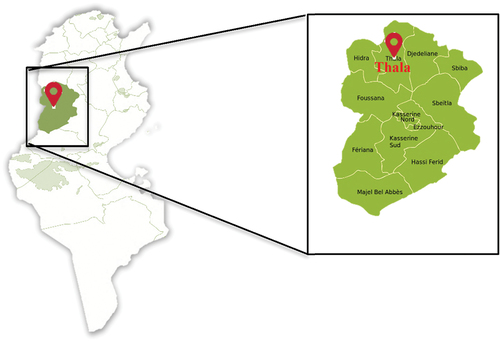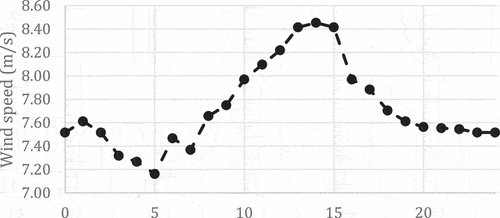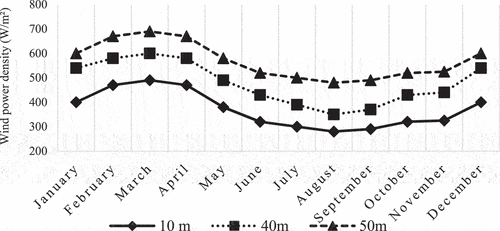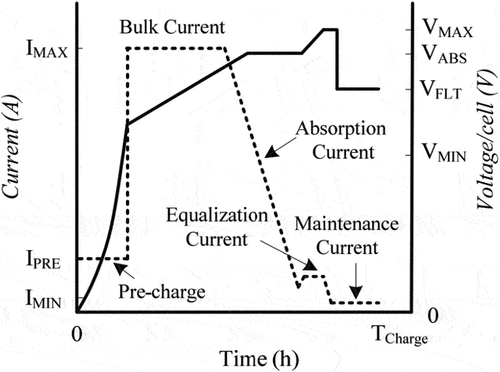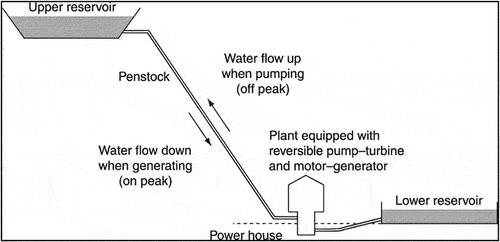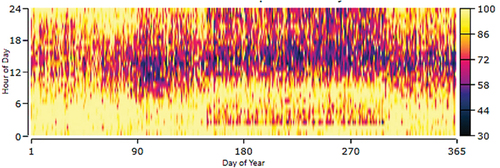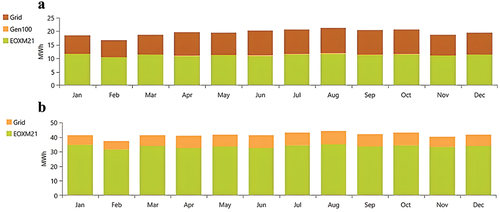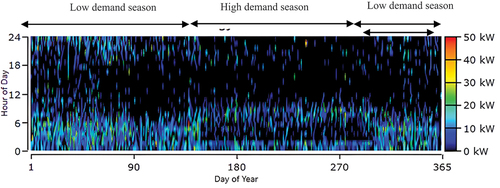Figures & data
Table 1. Previous research, system architecture, and key findings summary.
Table 2. Case study characteristics.
Table 3. Monthly climate data of Thala.
Figure 5. Hourly power demand pattern on two days of maximum power consumption during 2019 and 2020 in Thala city (A.R.C. Citation2009).
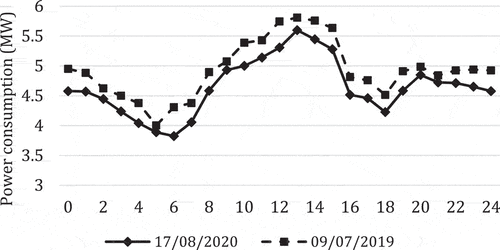
Table 4. Average demand of Thala city (Llc Citation2022).
Table 5. The power rating of different appliances in Thala city (Power Consumption Table Citation2003).
Figure 6. Annual mean wind speed (Elamouri et al. Citation2008).
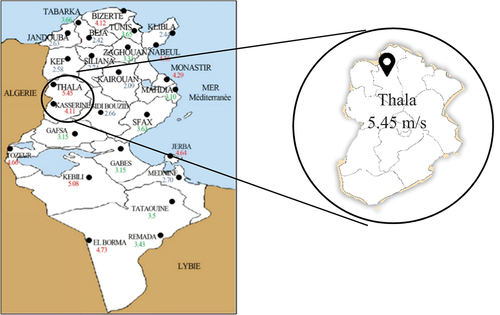
Table 6. Properties of olive mill by-products (Al-Najjar et al. Citation2022).
Table 7. Biomass availability and biogas yield production in Thala city (Milanese et al. Citation2014; Shakeri et al. Citation2017).
Figure 11. Carbon footprint from different processes within the olive oil production cycle (Feliciano, Maia, and Gonçalves Citation2014).
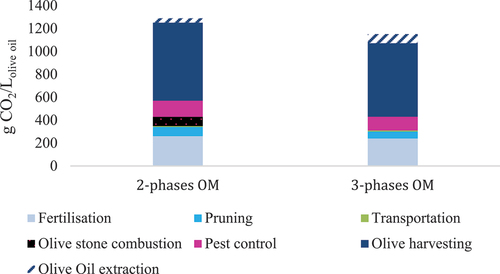
Table 8. Technical properties of the selected components.
Figure 12. The power curve of the selected wind turbine (eocycle Citation2023).
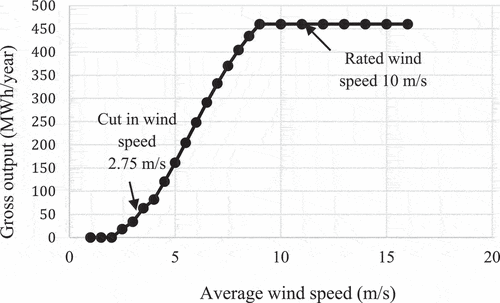
Table 9. Simulation scenarios.
Table 10. Optimization results - architecture, costs, and environmental impacts.
Figure 14. Cost-optimal configurations design for the On-grid_BATT scenario: left (Wind/Batteries/Grid/Converter); right (Wind/BG/Batteries/Grid/converter).

Figure 15. Monthly average electric production: (A) Wind/Batteries/Grid/converter, (B) Biomass/Batteries/Grid/converter.
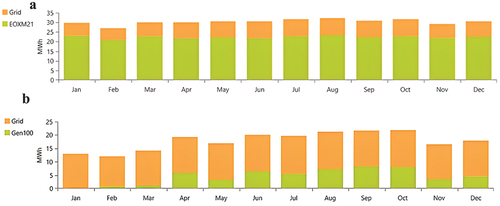
Figure 16. (A) energy purchased from the grid and (B) energy sold to the grid for the first configuration of Wind/Batteries/grid/Converter.
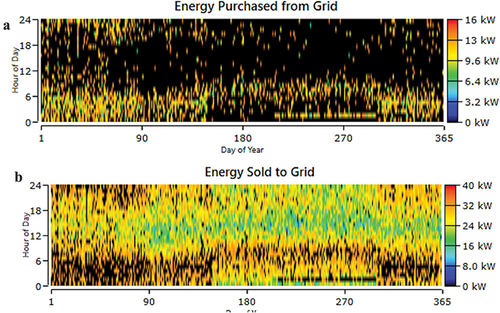
Figure 17. (A) energy purchased from the grid and (B) energy sold to the grid for the second scenario BG/Batteries/grid/Converter.
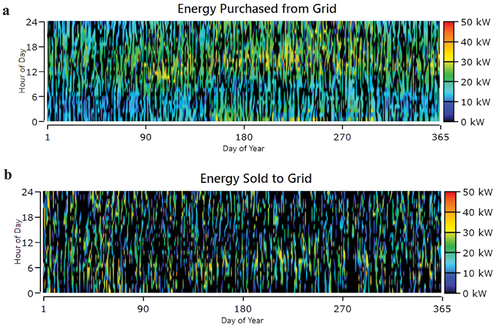
Figure 18. Cost-optimal configurations design for the On-grid_PHS scenario left (Wind/BG/PHS/Grid/Converter); right (Bg/phs/grid/converter).
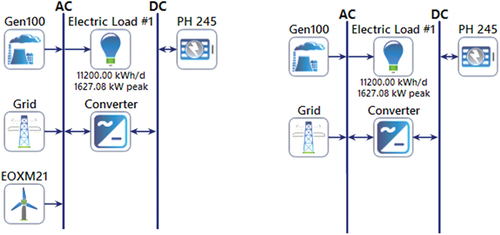
Figure 19. Monthly average electric production: (A) Wind/Biomass/PHS/Grid/converter (B) Biomass/PHS/Grid/converter.
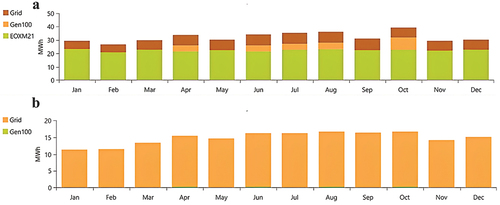
Figure 21. Cost-optimal configurations designed for the On-grid without storage scenario, left (Wind/BG/Grid/Converter); right (Wind/Grid/converter).

Figure 24. Cost-optimal configurations design for the off-grid _BATT scenario, left (Wind/BG/Batteries/Converter); right (Bg/batteries/converter).
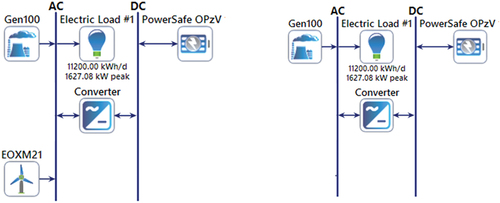
Figure 26. Hourly electric production, (A) generic 100 kW biogas gasifier, (B) EOX M-21 kW wind turbine.
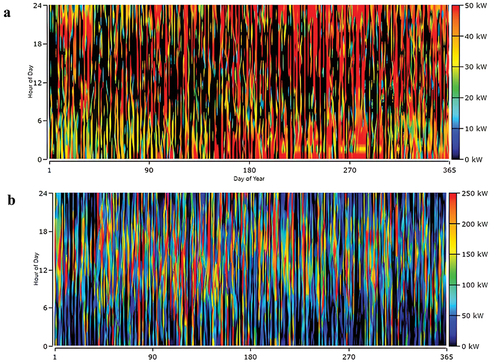
Figure 27. Cost-optimal configurations design for the off-grid _PHS scenario, left (Wind/BG/PHS/Converter); right (Bg/phs/converter).
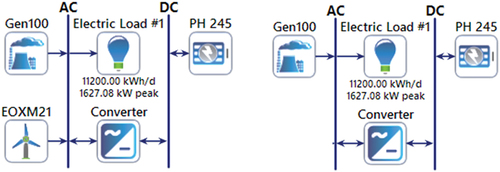
Table 11. Economic comparison with the base system.
Table 12. Sensitivity analysis variables.
Table 13. Impacts of NDR and project lifetime on the optimal configuration.
Figure 30. Sensitivity analysis: electric load average vs. biomass availability, NDR= 8%, project lifetime=25 years, surface plot: NPC, superimposed: LCOE.


